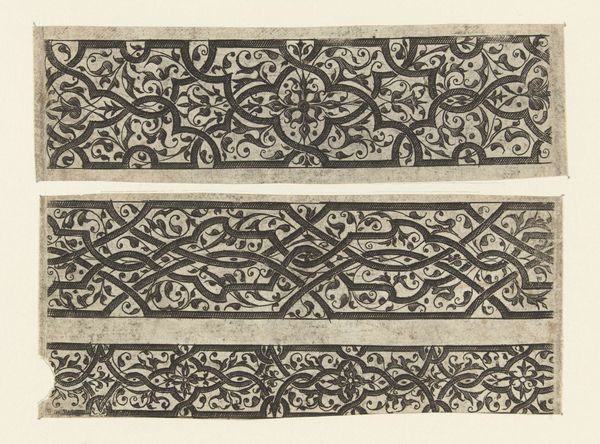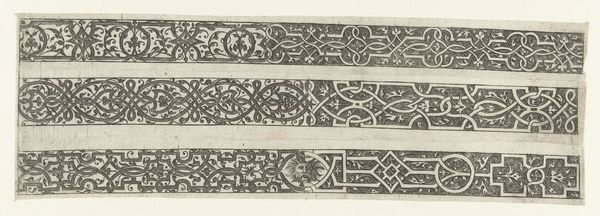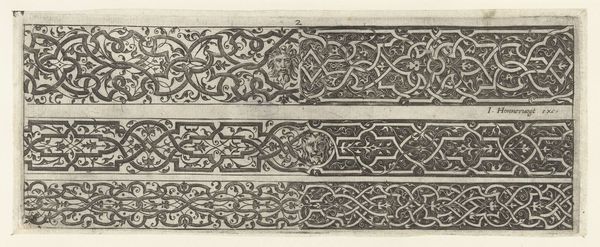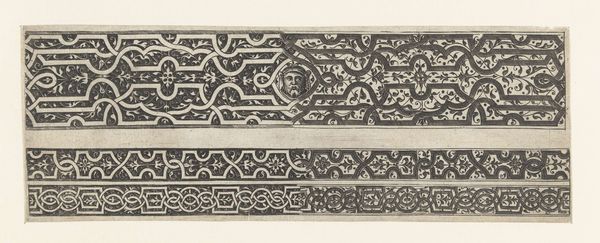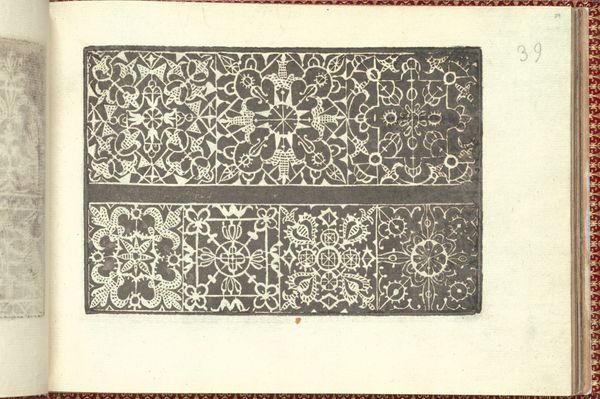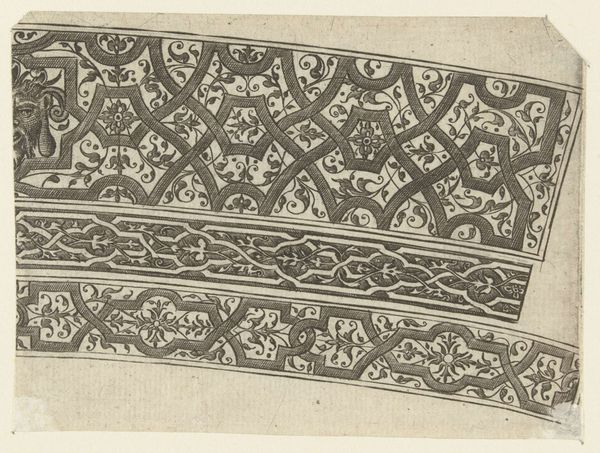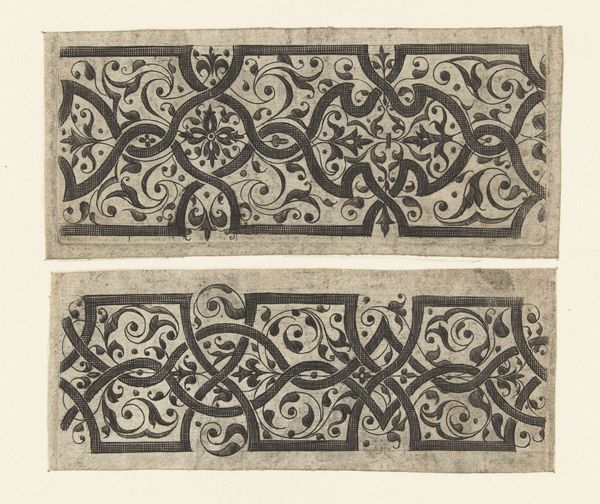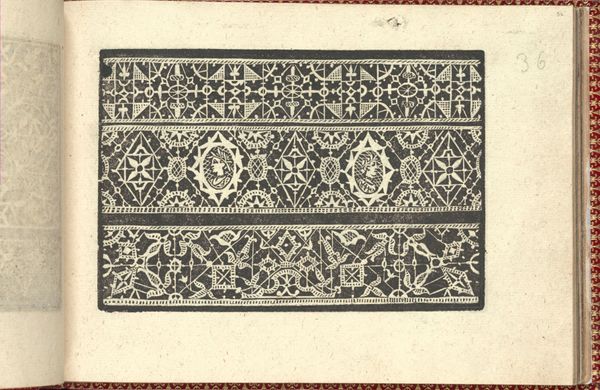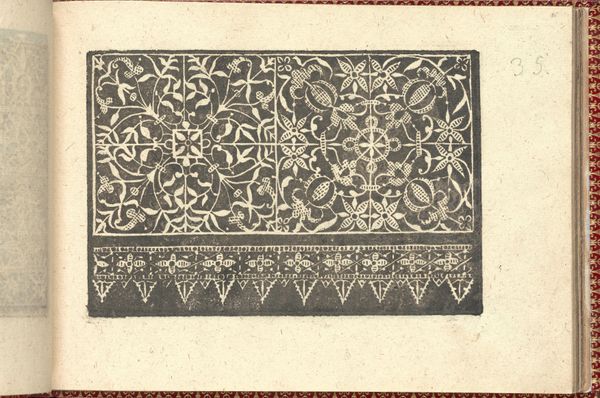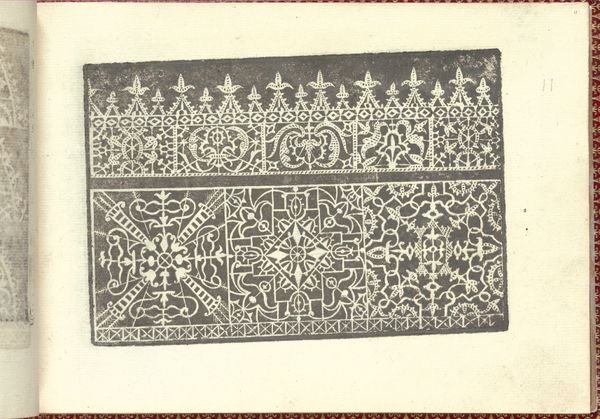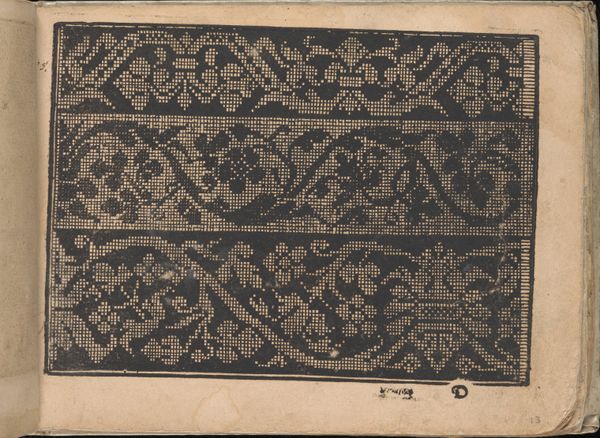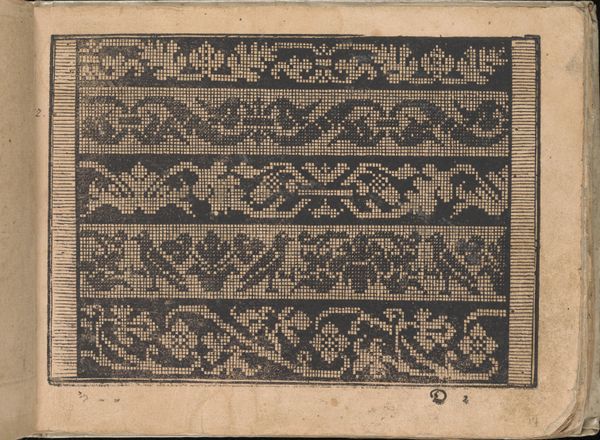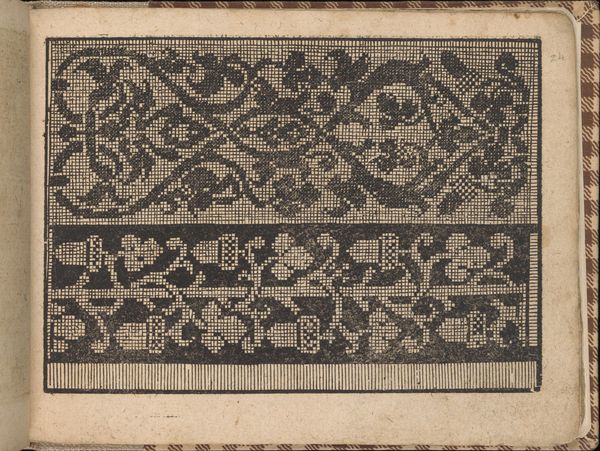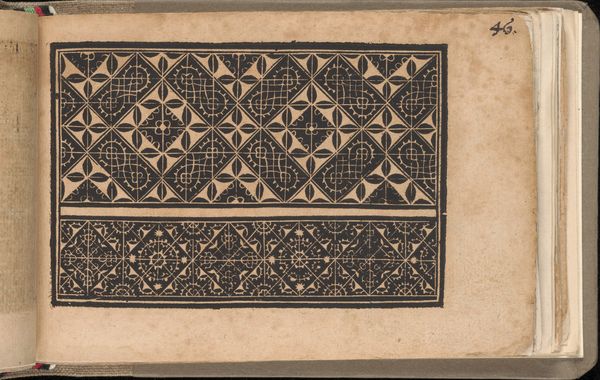
Twee smalle en twee brede friezen met zwarte moresken op een witte ondergrond 1528 - 1580
0:00
0:00
drawing, print, engraving
#
drawing
# print
#
pattern
#
11_renaissance
#
geometric
#
engraving
Dimensions: height 48 mm, width 111 mm, height 47 mm, width 111 mm
Copyright: Rijks Museum: Open Domain
Curator: This engraving, created sometime between 1528 and 1580 by Balthazar van den Bos, features what the Rijksmuseum calls "Twee smalle en twee brede friezen met zwarte moresken op een witte ondergrond"—"Two narrow and two wide friezes with black moresques on a white background." Editor: My first thought? The hypnotic geometry—it’s so precise! It's both captivating and somehow...restless. A bit like trying to organize my thoughts on a Monday morning after too much daydreaming. Curator: The Renaissance loved patterns. This design is an intricate dance between organic floral motifs and structured geometric forms. Notice the repetition, how it creates a rhythm, almost musical. You could imagine this as a border in a grand room, guiding your eye along the architecture. Editor: These moresques, born from the artistic melting pot of Moorish Spain, really are whispers of a complex cultural exchange, aren't they? We see the convergence of geometry and arabesque – traditions sometimes in conflict, here, beautifully synthesized. Curator: Exactly. And Balthazar, ever the designer, uses that tension so cleverly. See how those thorny, almost gothic shapes are softened by the curling leaves? He's building an allegory, if you will, of control versus abandon. I almost want to print this pattern on silk scarves... but then, everyone would copy me, wouldn't they? Editor: I'm drawn to this idea of the "copy." It's an engraving, made to be replicated, shared, and potentially adapted. These friezes are both singular works of art, and a means for further dissemination of an idea—the aesthetic and social influence spreading outward, like ripples in time. Curator: Absolutely, darling. Imagine the artisans who drew inspiration from such prints to embellish furniture, ceramics, maybe even illuminated manuscripts. You start to see the chain reaction, design rippling through an entire culture. And here we are, centuries later, still talking about them. Extraordinary! Editor: It really highlights the profound role design plays in shaping our cultural landscape, how the boundaries between ‘art’ and ‘craft’ are constantly renegotiated, especially when we consider who benefits and is acknowledged in these historical conversations. Curator: Right? It really highlights how patterns can become language, telling stories across eras and cultural borders, without using a single word. Editor: And speaking about how something seems simultaneously simple yet complex, what do you think of a stroll to the next gallery?
Comments
No comments
Be the first to comment and join the conversation on the ultimate creative platform.
